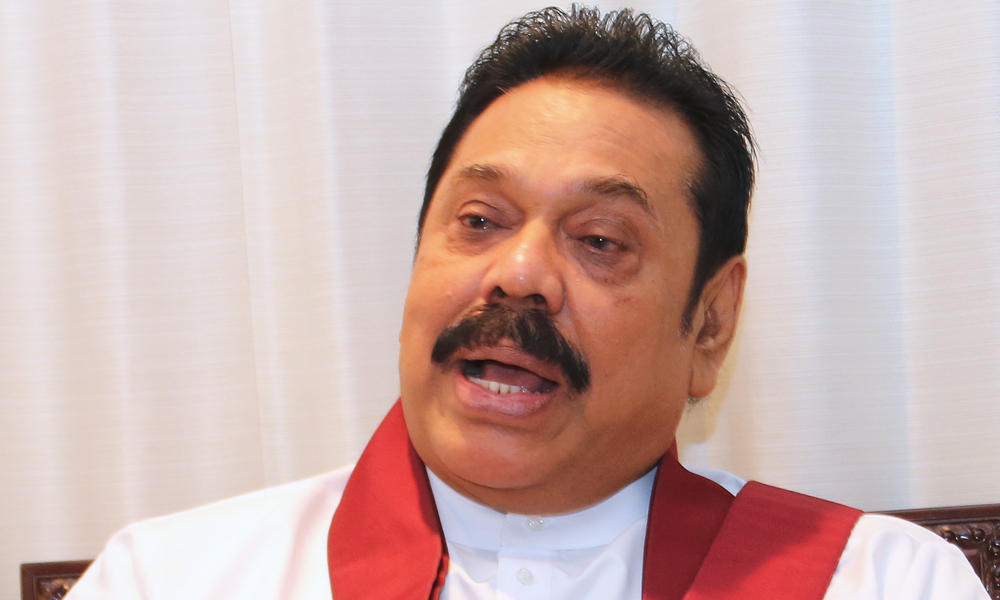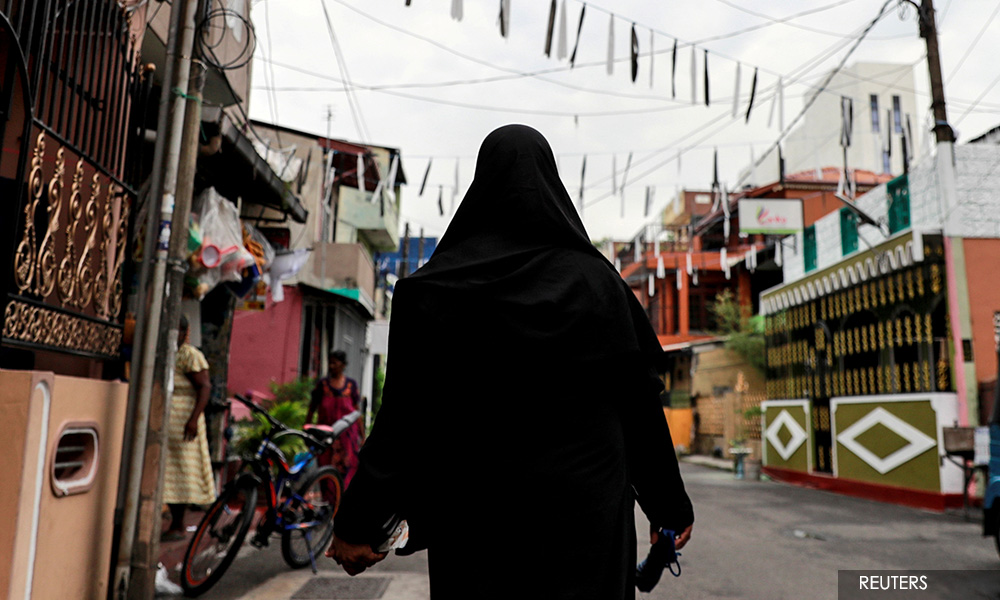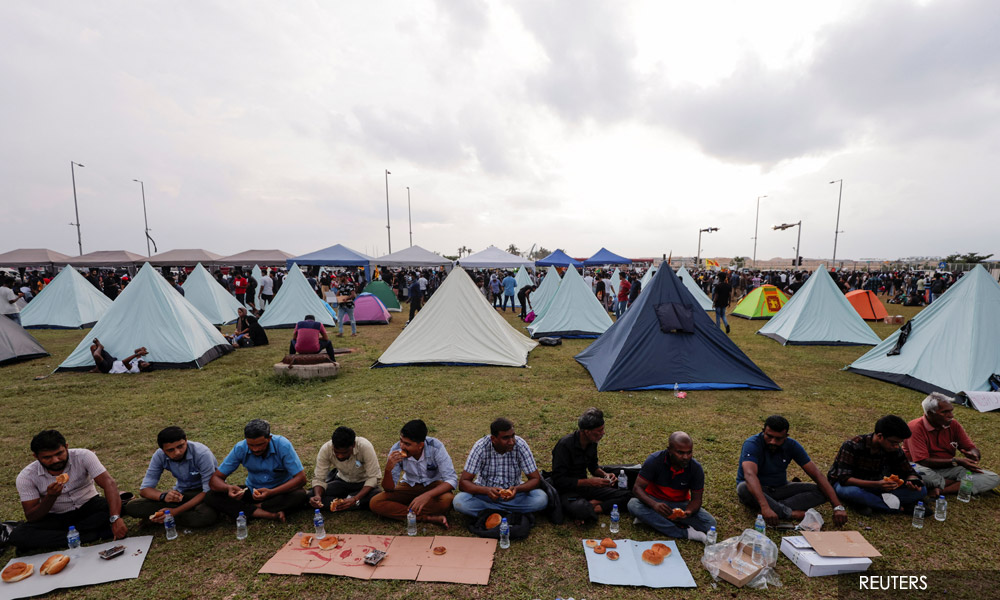ADUN SPEAKS | For the last two weeks, there are debates on social media platforms and off, about the possibility Malaysia end up like Sri Lanka.
Of course, there are two sides to any argument, with one side claiming it is highly likely and the other arguing that it’s unlikely. There are political aspects to the arguments as well.
If we look at the situation, putting aside our political difference, we could relate the case of Sri Lanka with Malaysia reliably.
Crisis explained
Rise and fall of Mahinda Rajapaksa
Sri Lanka, a country which came out of a deadly decades-long civil war in 2009. Since the end of the civil war, Sri Lanka emerged as one of the major tourist destinations in South Asia.
Post civil war, the country was vigorously looking for foreign investments for its infrastructure and service sectors, for it to become a high-income nation in the region. That vision was possible, considering the size of the island nation and relatively smaller population compared to the rest of the region.

However, those visions were not translated into reality, due to various reasons. Those exact same reasons have put the country into bankruptcy today.
After winning the civil war in 2009, former president Mahinda Rajapaksa called for an early election in 2010, two years before his term expires. As expected, he became president with a landslide victory, as the majority Singhalese population regarded him as a demigod, for winning the civil war and crushing the minority Tamils’ quest for self-determination in the north and east of the country.
Winning the election comfortably against former commander of Sri Lankan Army, Sarath Fonsekha, Mahinda Rajapaksa begin to cement his power in the government and appointed his family members and close aides to crucial positions.
After winning the 2010 election, Rajapaksa also favoured the inflow of investment, in particular from China for major infrastructure projects in the country. Rajapaksa family’s totalitarian nature does not only irked the opposition, but also his own party MPs and members.
Rajapaksa’s uncontrolled power resulted in a constitutional amendment that allows him to contest for a third time, despite the earlier two terms limit.
In the 2015 election, Sri Lankan opposition chose Mahinda Rajapaksa’s own party man and Health Minister in his government, Maithiripala Sirisena as the opposition’s sole candidate. Sirisena won the election with a slimmer majority of lesser than four percent vote difference.
Rajapaksa even attempted to stage a coup d’etat while election results were coming out.
After the 2015 election, Rajapaksa family’s abuse of power, mismanagement and corruption came into scrutiny and a forensic audit revealed that Sri Lanka incurred 1.9 trillion rupees (US$8.9 billion) additional liability in the projects spearheaded by Mahinda’s regime.
The Sri Lankan government at this point revealed that their investigation has found the Rajapaksa family has stashed US$10 billion in foreign countries; some countries like Seychelles openly declared their willingness to assist Sri Lanka in recovering those monies. Many of the Rajapaksa family members have fled the country, fearing imminent arrests and prosecution.
Resurrection of Rajapaksa family
However, Mahinda Rajapaksa is not someone who easily gave up and would go to any extent to grab power. Since losing power in 2015, Mahinda has been constantly working to return to power and even became an MP, the first former President to become a member of the legislature in the history of Sri Lanka.
He knows exactly how to drub populist sentiments to sway the people’s vote. Mahinda is a master in destabilising political alliances and successfully caused discord in the ruling coalition of Sri Lanka, just after three years after his ouster.
Mahinda along with his family members didn’t want to face corruption charges in court. They did everything in their power, from splashing the cash to playing racial, and religious sentiment to achieve their target of removing the government of the day.
When the Rajapaksa family’s desire to become powerful via backdoor was defeated by the court process, they immediately started to play their proven weapon, ‘religious extremism’ to destabilise the nation’s politics.
Mahinda Rajapaksa is a self-proclaimed Singhala-Buddhist ‘champion’ or ‘extremist’ in layman’s words. He became president for the first time, by playing the racial sentiment against the Tamils. He promised to ‘crush’ the liberation movements in Sri Lanka, in particular the Liberation of Tigers of Tamil Eelam (LTTE) which was fighting a three-decade-long war for self-rule in the north and east of the country.
He won his second term after unleashing a deadly massacre on Tamil population in the north and east of Sri Lanka, in the name of the ‘war on terror’. Sri Lankan regime was accused of committing numerous crimes against humanity during this period. Hundreds of thousands of Tamil civilians fleeing the war zone were exterminated mercilessly. And the Singhalese nation gave him a victor celeb for his ‘feat’ of defeating the Tamils’ quest for self-determination.
Extremists’ Next Target
After losing power for just three years, Mahinda Rajapaksa realised that he can’t drub the ‘LTTE’ and anti-Tamil sentiment anymore, since the organisation was done and dust in 2009. Since Tamils are a ‘weakened’ force in the country, the Singhala-Buddhist extremist of Sri Lanka diverted their attention toward the Muslims.
The Muslim community, which was excelling in the businesses in the eastern part of the country became the target of this group.
At the beginning of 2018, there were reported incidents of attacks against Muslims, mosques and Muslim businesses. Members of Sri Lanka Podujana Peramuna (SLPP), aligned with Rajapaksa family were involved in the riots. The hate campaign against the Muslims was started by the right-wing elements, during the Sri Lankan local government election in the same year.
SLPP made a large gain in those elections, and the ‘hate campaign’ proven to be helpful for the right-wing elements in the country.
At this instance, the Sri Lankan Easter bombing of 2019 happened. The ‘nationalist’ sentiment was once again played up by the Rajapaksa loyalists. With the race relations between majority and minority deteriorating, the Rajapaksa camp campaigned on the basis that they’re the most credible political force to deal with such threat of extremism or terrorism in Sri Lanka, citing the ‘success’ of their military campaign against LTTE in 2009.
Rajapaksa family saw an opportunity to make a comeback in power with the hate campaign against the minority. Eventually, in 2019, Gotabaya Rajapaksa contested in the presidential election and won with a convincing majority. And Rajapaksa family back into power, sweeping the cases against them under the carpet, and once again controlled the nation island as they wished.
In the parliamentary election that followed suit in August 2020, the Rajapaksa families’ SLPP scored a massive win, winning 145 out of 225 seats in Parliament. Again, the main campaign in the election was about the Easter Attacks.
Rajapaksa family created an illusion amongst the Sri Lankan public, in particular with the Singhalese population, that they’re the saviours of the nation and its Singhala-Buddhist conservative society.

Post Presidential and Parliamentary Elections in Sri Lanka, even those who supported Rajapaksa family previously, cast doubt on the Easter Bombings. Cardinal Malcolm Ranjith, Sri Lanka’s Archbishop of Catholic Church, in his address to the 49th UN Human Rights Council in Geneva, openly said ‘Easter massacre was part of a grand political plot’ although the first impression was that, it was the work of Islamic extremists.
Rampant corruption
The powerful Rajapaksa family made a comeback in mainstream politics of Sri Lanka, with the election of Gotabaya. Former president Mahinda was appointed as prime minister; their younger brother Basil Rajapaksa, famously known as ‘Mr Ten Percent’, was the finance minister; Chamal, the eldest of the Rajapaksa Brothers, was irrigation minister, after formerly holding powerful posts of the Speaker of the House and minister of shipping and aviation and Namal Rajapaksa, Mahinda’s eldest son, was the minister of youth and sports.
The family members controlled the country’s finance, policy direction and almost everything. Cases against them filed previously were closed; and with their supermajority in Parliament, they were more powerful than they used to be.
The Rajapaksa Family was running Sri Lanka, as though it was their inherited Kingdom, thanks to the support of the majority of Singhalese people, who were hoodwinked by the ethnic-religious rhetorics of Rajapaksa and company. In 2015, the then Sri Lankan Govt had revealed that almost US$10 billion, more than Sri Lanka’s reserve, was kept outside the country by the allies of Rajapaksa regime. The cases were either dropped or settled by the ruling family, with their return to power.
Failed Policies
The Sri Lankan government, under the Rajapaksa regime, doesn’t only fail the country with their mismanagement, but they too introduced policies which caused the country’s economy to collapse.
Sri Lanka’s major economic sector that steadily kept the forex inflow was tourism. With Covid-19 caused the tourism industry of the entire world to suffer, Sri Lanka was no exception to it.
During his presidential campaign, Gotabaya promised to turn Lanka’s agriculture sector into a ‘sustainable’ one. In April 2021, he fulfilled the promise by imposing a ban on chemical fertilisers and ordering the farmers to go organic.
Although promoted as a ‘safer, sustainable alternative for the current conventional agriculture methods which relies largely on chemical fertilisers, the effectiveness of such transition was not proven anywhere on large scale. Sri Lanka wanted to be a champion of sustainable agriculture, and paying a heavy price for such a short-sighted policy, without scientific reasoning.
By banning the chemical fertilisers, Gotabaya’s govt thought they would save US$400 million they spend on fertiliser subsidies. But, the short-sighted ban resulted in domestic rise production falling by 20 percent, causing a shortage of rice in the country.
Sri Lanka was forced to import $450 million worth of rice for its people. Not only the rice production, the country’s major export commodity, the famous Ceylon tea production too, fell short and caused further damage to Sri Lanka’s forex inflow. Not just that, all the agriculture-related production was heavily affected and the price of vegetables and fruits began to skyrocket.
With food production falling short, and prices going up, Sri Lanka’s inflation reached a record 30 percent in April. With the debts increased to a record high, the government had to spend the reserves to import essential goods, such as fuel and food. When the reserves dried up, Sri Lanka decided to print more cash bills to pay the salaries of civil servants. The printing of money would only further worsen the inflation, but the island county has no other choice.
Sri Lankans wake up
With the Rajapaksa family’s terrible management of the country, the economy of Sri Lanka suffered its worst and people are suffering for essentials; even food. The Rajapaksa family’s awaited help from China didn’t arrive.

Their allies in the international community, including neighbour India, have distanced themselves from the regime. Sri Lankans, regardless of their race and religion are suffering now, and the majority Sinhalese people coming to their senses, that the minorities, be it Tamils or Muslims, are not their enemies. They didn’t cause these miseries, but it is the political elites of their own kind who led them to the current situation.
The protests over the weeks have forced Mahinda to resign and the entire family has gone into hiding since. People’s anger resulted in the Rajapaksa family and their allies’ houses being burnt down. Rajapaksas luxury car collections were burnt down, and Sri Lankans shared the videos happily on their social media pages.
On May 18, Tamils in Sri Lanka observed the Tamil Genocide Remembrance Day, to pay homage to the victims of Mullivaikal Massacre, which happened 13 years ago, during the end of the bloody civil war. For the first time in the history of Sri Lanka, the Singhalese community also took part in the remembrance events in Colombo.
Is Malaysia going to end up like Sri Lanka?
With the long observation on Sri Lanka above, can one see the similarities our country has with the island nation? I would like to summarise for the easier grasp of the readers.
1. Ethno-religious rhetoric
Are we forgotten how the Perikatan Nasional or BN, came into power in February 2020? Malays were told that their status are challenged, although the Bumiputera rights are enshrined in the Federal Constitution. Umno-PAS-Bersatu formed alliance in the name of Malay Unity, but end up fighting for their power. Their concern was of power and perks of power, not the best interest of the rakyat, be they Malays or non-Malays. Can we see the pattern of the Sri Lankan regime here?
2. Corruption cases
Can’t we see the relentless effort of some Umno politicians to escape from their court cases? Although the trials are progressing, the call for an early general election are repeatedly echoed. Just look at what happened with Rajapaksas case in Sri Lanka, with their return to power. Don’t be surprised if those monies, and properties are returned to them subsequently.
3. Nepotism
The appointment of Pasir Salak MP Tajuddin Abdul Rahman as ambassador to Indonesia is the latest example of how this government rewards the allies. Credibility, and capability aside, such positions are a reward for one’s loyalty now. Can’t see the similarity with Sri Lanka?
4. Inflation
Sri Lanka’s worst-ever inflation started with their food inflation. Malaysia’s inflation is expected to be around 2.2 percent to 3.2 percent, according to the Bank Negara Malaysia report released a few weeks ago. But the report doesn’t specify the food inflation. Common people are already feeling the pinch of rising of goods prices. The government may be in denial or don’t even care about the uncontrolled price hikes, but it is a fact before our eyes.
5. Lack of Food Security
Malaysia is among one of the few countries that have a dedicated ministry for the food industry, with food security insight. But, are our food supply is really secured? We are still importing many of our food products.
From dairy products to vegetables, rice to wheat, we are still relying on imports. With the Ringgit weakening against US Dollar, the price of these food products is steadily increasing. Sri Lanka imposed the food shortage and food inflation on itself, with the short-sighted sustainable agriculture policy.
Our food security is in danger and food inflation is increasing, because we don’t have a policy at all. The cabinet decision to liberalise food products approved permit is exactly because of this looming danger. With India’s ban on wheat export, the prices will increase another round soon.
Unlike Sri Lanka, Malaysia can produce its own food products with the number of resources we are having. But, somehow we are not doing it. We don’t have self-sustaining food security policies to encourage and enhance the local food production industry. And such a lack of policies is harming us, even now.
Conclusion
If we analyse and compare the case of Sri Lanka with Malaysia, we can conclude that we are not far from becoming the next Sri Lanka. We don’t have visionary leadership to set this country in the right direction. We are easily swayed by issues and controversies being played up (by some quarters) with the intent of diverting our attention. We are discussing trivial issues, while the country is heading to become the next Sri Lanka. - Mkini
SATEES MUNIANDY is the state assemblyperson for Bagan Dalam.
The views expressed here are those of the author/contributor and do not necessarily represent the views of MMKtT.



No comments:
Post a Comment
Note: Only a member of this blog may post a comment.